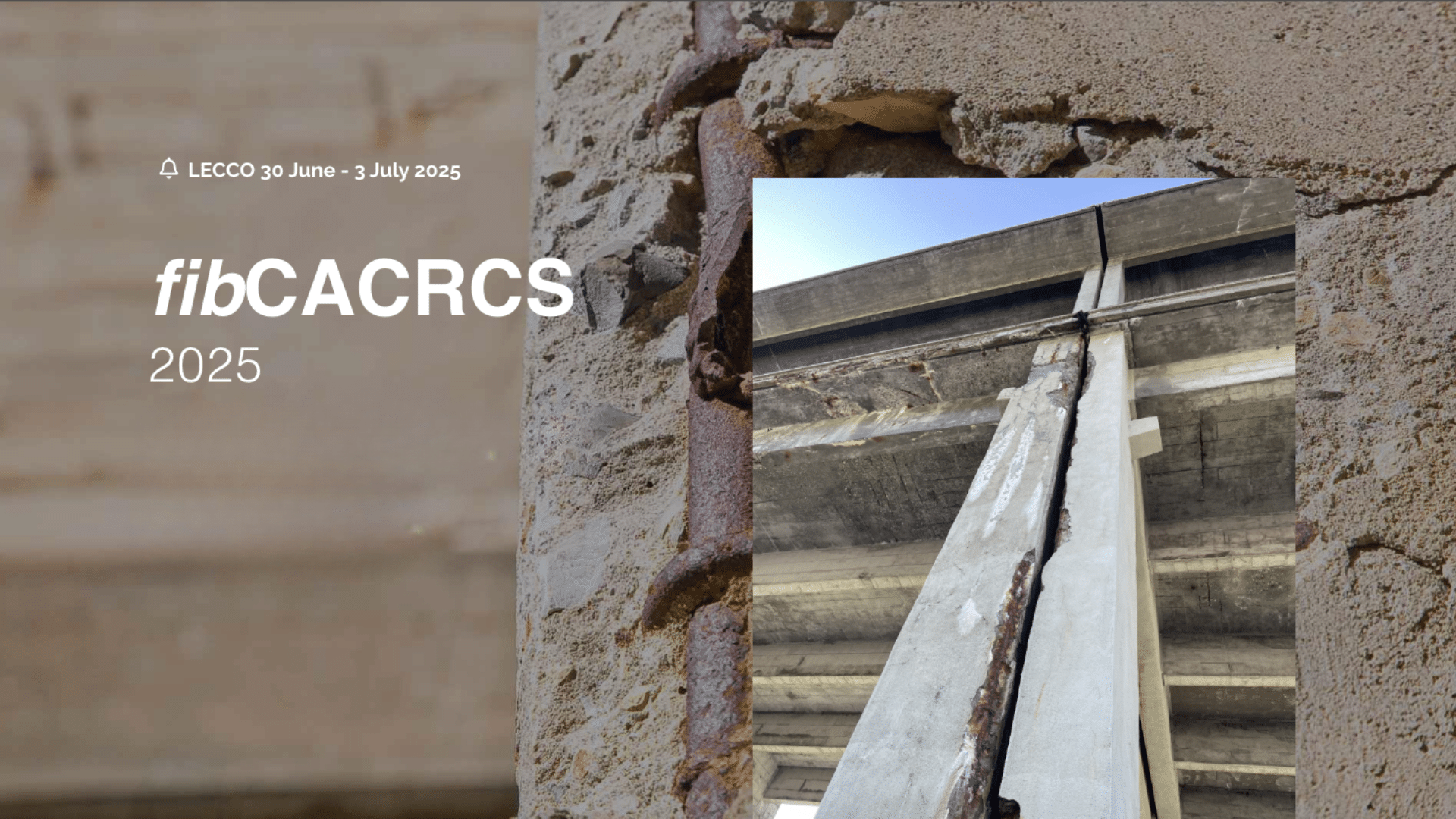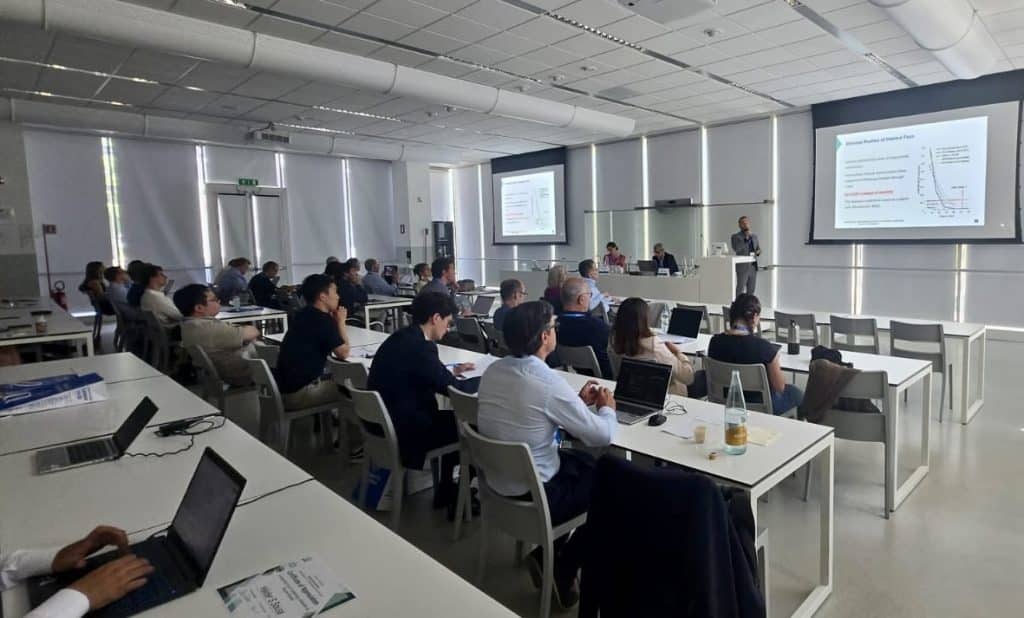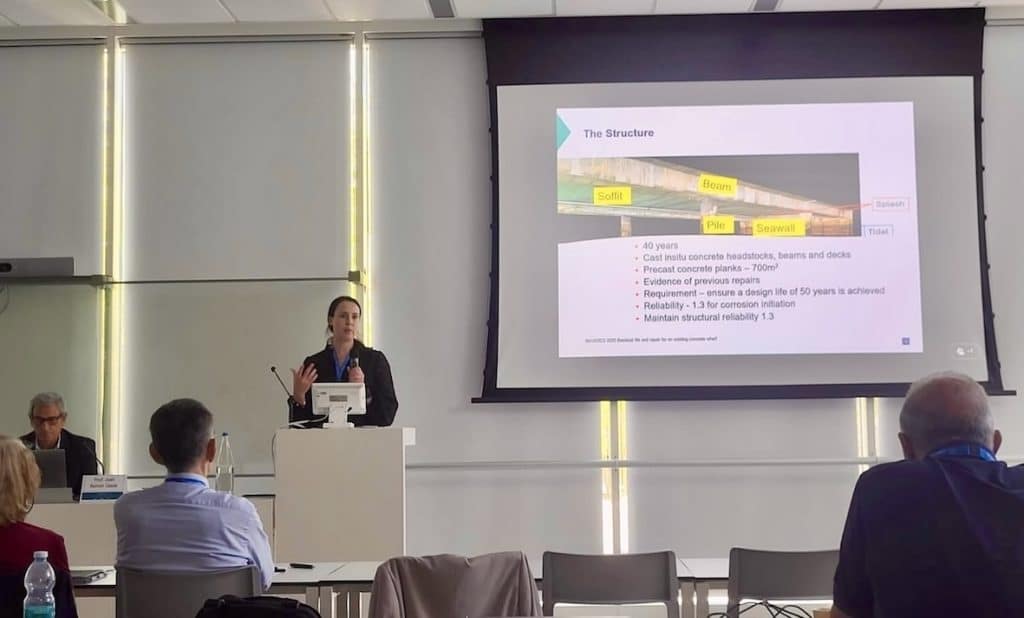
BCRC Presents at fibCACRCS DAYS 2025 in Italy
BCRC was proud to contribute to this year’s fibCACRCS 2025 global conference, sponsored by the fib (Fédération internationale du béton).
The event brings together international researchers and engineering practitioners focused on practical solutions for corroded reinforced and prestressed concrete structures.
Sharing Australian Experience with a Global Audience
BCRC NSW State Manager Rebecca Newby and Principal Engineer Simone Bernardini presented three technical papers, all of which were co-authored with BCRC Director Frank Papworth. Each paper was based on recent BCRC projects across Australia, highlighting applied engineering responses to complex durability challenges.
Advancing Durability Through Applied Research
These papers reflect the BCRC’s commitment to transforming field-based investigations into practical, data-driven solutions for repair and durability.
By sharing our experience with the global community, we continue to shape better outcomes for complex infrastructure across Australia and beyond.
1. Investigation and Repair of an Immersed Concrete Box Subject to Restrained and Structural Cracking
Authors: Simone Bernardini, Frank Papworth, Rebecca Newby
This paper examines the deterioration and repair of a below-ground concrete box situated in reactive clay and exposed to rising saline groundwater. Despite multiple attempts to seal thermal contraction cracks, saltwater ingress continued to persist. Additional cracking occurred as the structure heaved and displaced overlying pavements.
Laser scanning revealed inward deflection of the box walls, with reinforcement approaching its elastic limit due to soil pressure. The proposed remediation strategy included:
-
Installing additional shear steel in the pavement
-
Constructing a mid-height strut slab
-
Designing and implementing a cathodic protection system
Pic: Simone Bernardini, BCRC Principal Engineer

2. Residual Life and Repair for an Existing Concrete Wharf
Authors: Rebecca Newby, Frank Papworth, Simone Bernardini
This study assessed the condition and future performance of a 40-year-old concrete wharf on Australia’s East Coast. The structure included both cast-in-situ and precast elements, which were exposed to marine conditions.
Both destructive and non-destructive tests were carried out, with results used to inform a probabilistic durability model based on fib Bulletin 34. Localised data was applied to assess chloride ingress, while variable reliability indexes were used to meet client-specific performance targets. The outcome was an optimised, risk-based repair specification with clear timeframes and intervention triggers.
Pic: Rebecca Newby, BCRC NSW State Manager

3. Corrosion Assessment of Post-Tensioned Cables
Authors: Rebecca Newby, Frank Papworth, Simone Bernardini
This paper presents findings from the assessment of over 5,000 metres of post-tensioned cables in a coastal high-rise building. A combination of ultrasonic pulse echo (UPE), impact echo (IE), and ground penetrating radar (GPR) was used to evaluate duct grouting conditions and locate voids.
GPR was most effective in locating ducts, while IE provided the best indication of ungrouted sections. Visual inspections confirmed corrosion at anchorages and in ungrouted zones. The study reviewed methods for detecting unstressed tendons, evaluating performance, and informing repair strategies to manage the risk of future failure.
Pic: Frank Papworth BCRC Director


